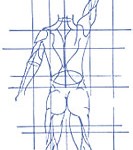The body is very complex. Thus, fitness requires skill development. This concept really isn’t pushed, but it’s critical for success.
Usually it seems to make sense to us that anything highly skilled should be taught. When we learn musical instruments, sports, languages, or our professions we seek out teachers to help us. Fitness, though, seems to be an exception. We tend to pick our mode of exercise -everything from road races, to group exercise, to the Ironman Triathlon – and jump right in. But exercise requires skills and like any skillset, there are basics and there are advanced skills that need to be mastered in the right order.
In fitness we are talking about movement skills. Through the course of our daily routines our bodies become dysfunctional. We unlearn the beautiful movement patterns we had as babies and instead find ways to compensate for movements we can no longer do. We then are left to deal with the low back, shoulder, hip, neck, and knee pain. The good news is we can relearn these skills and understand that it’s not just about moving ourselves or a weight from point A to point B, but how we move it.
A great example is the plank. Planks are pretty challenging in general, but they really become difficult if you get into the details of the exercise. For me the whole point of a plank is to teach someone about getting their shoulder blades into proper position. That means pulling them together towards your spine and down away from your ears. You are looking for neutral, the point where your shoulder blades are in their center position.
Holding your shoulder blades in neutral makes the plank intense for two reasons. Most people have a very difficult time getting to neutral, if they can get there at all. So just the act of pulling them into position with the right muscles can be a lot of work. Also, pulling your shoulder blades back into position tempts your body to compensate by extending the lumbar spine – in other words, arching the low back. Thus, if you pull your shoulder blades to where they need to be, that will force your abs (which are the muscles you are trying to train in the first place) to work extra hard to keep your back from arching. If you really get your shoulder blades to neutral without any low back arching, then one minute will be pretty intense for most people.
This is a basic concept in exercise but most people are unaware of it. As a result they find other ways to increase intensity. They add time, planking for 2 minutes or more, or they add weight on their backs, or they stick limbs in various directions, etc. And this becomes the approach for every exercise. Adding weight, reps, or speed to make it harder rather than finding the weak spots and the skill deficits that could be improved. Injury tends to be the final result long before better health, fitness, and aesthetics have been reached.
There are many more skills like this that make a real difference in our exercise and our daily lives. If you haven’t mastered them then you are missing out on better results and you are likely headed down the path to injury. I hope that this blog helps to illuminate some of this important subject and you will find articles and pages dedicated to taking us towards that goal. But as I will say many times to come, the body is complex and if you have the means, nothing can replace a good personal trainer. They will teach you to forget the weight and do the movement.
